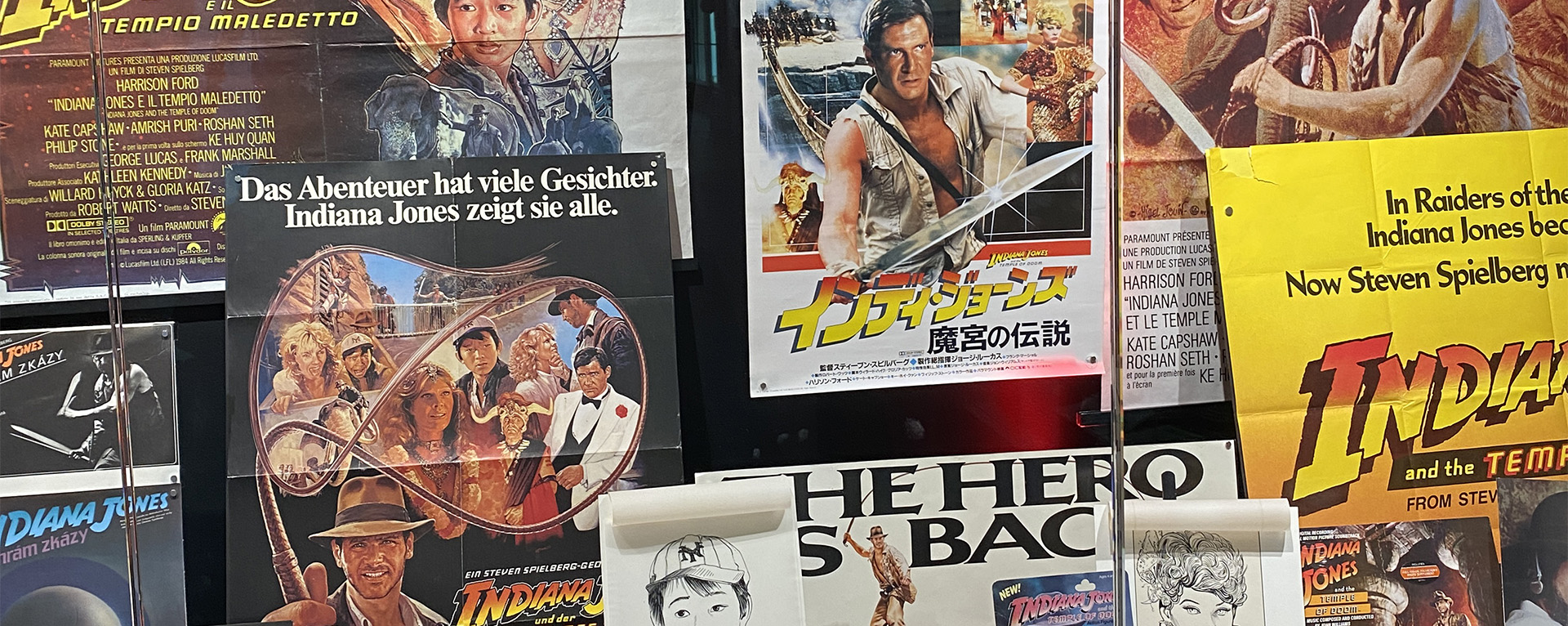History in Objects: Celebrating 40 Years of Indiana Jones and the Temple of Doom
Lucasfilm exhibits memorabilia from the 1984 release of Indiana Jones and the Temple of Doom.
“History in Objects” is a continuing series exploring Lucasfilm’s legacy stretching from our founding in 1971 to today. Through objects both rare and commonplace, the company’s past, present, and future are brought to life.
With this year’s 40th anniversary of Indiana Jones and the Temple of Doom, Lucasfilm historians recently created an exhibit of memorabilia from the 1984 film at their San Francisco headquarters, displaying various marketing and production materials, consumer products, promotional tie-ins and other items associated with the film. This special edition of “History in Objects” will focus on a handful of items in the display.
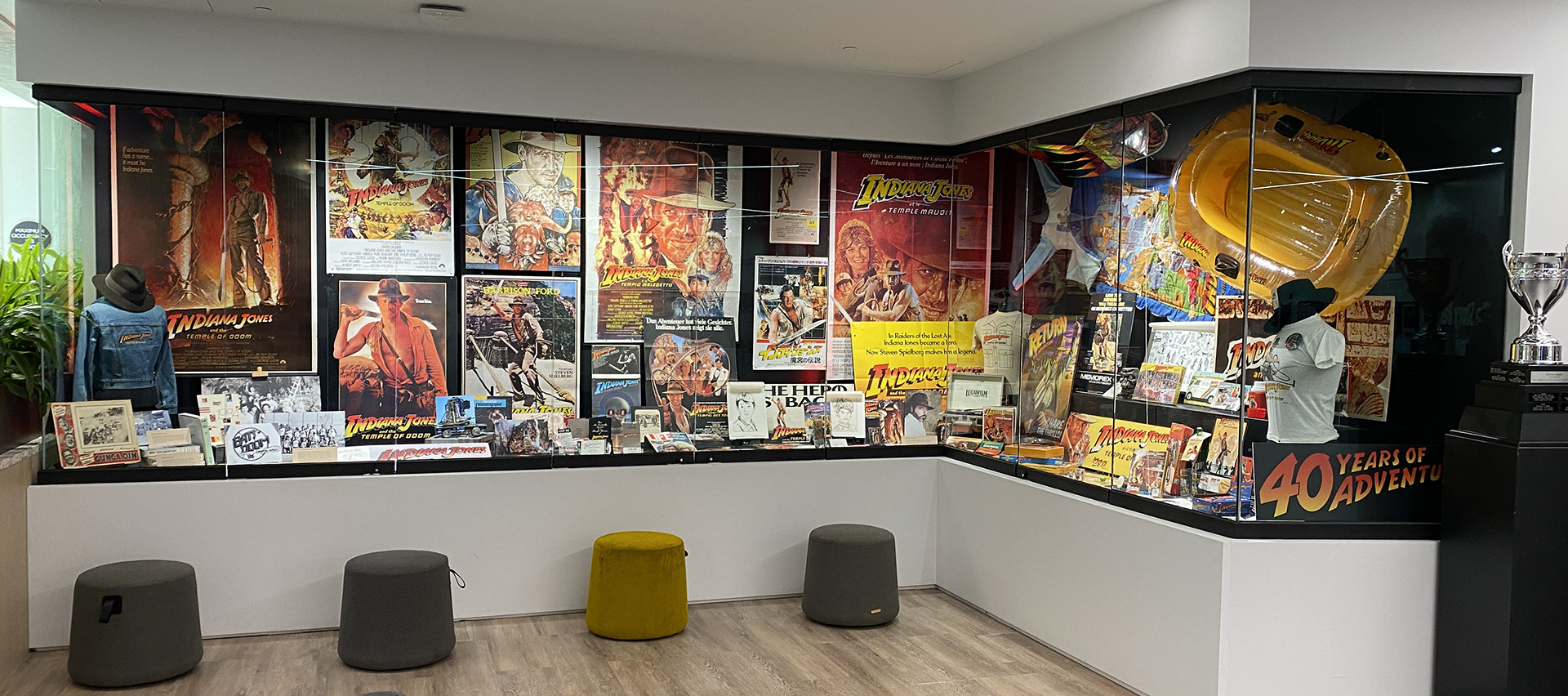
If Adventure Has a Name….
Set one year before the events of Raiders of the Lost Ark (1981), Temple of Doom was Lucasfilm’s first prequel story, and marked the end of the company’s first era of successive blockbuster releases, beginning with American Graffiti (1973) and Star Wars: A New Hope (1977). Originally entitled Indiana Jones and the Temple of Death, it was the first entry in the series to use the Indiana Jones name in its title, a reflection of the defining significance of Harrison Ford’s performance as the central character.
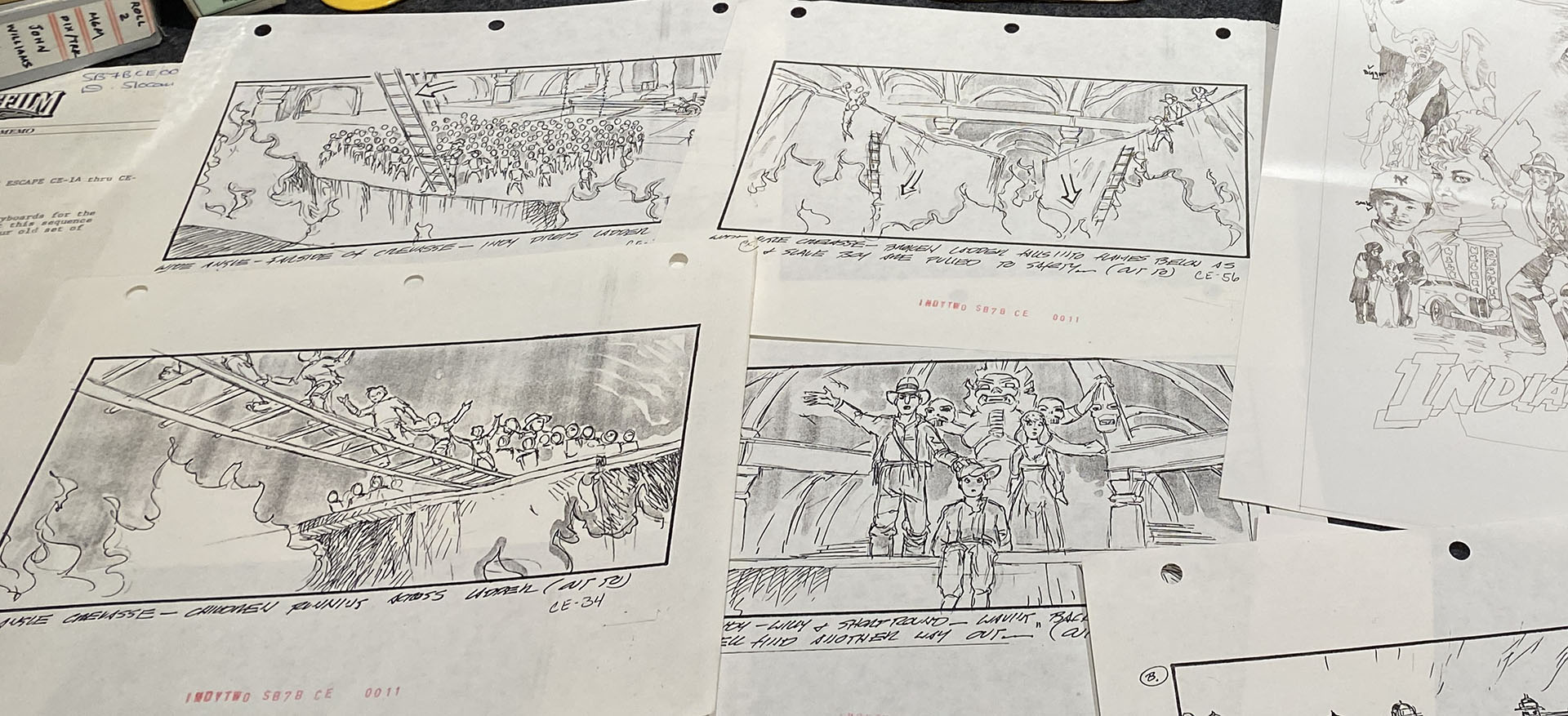
On the Cutting Room Floor
These storyboards depict the original “Children’s Escape” sequence, most of which was cut from the final film. After freeing the kidnapped children from their shackles, Indy, Willie, and Short Round lead them across the temple’s deadly lava chasm, but not before their improvised bridge catches fire, leaving the three heroes to escape via the mine cart tunnels instead. In the finished sequence, the children simply make their own way to freedom. These storyboard copies belonged to English cinematographer Douglas Slocombe, who studied them before the shoot at Elstree Studios. They were kindly donated by his daughter, Georgina Slocombe.
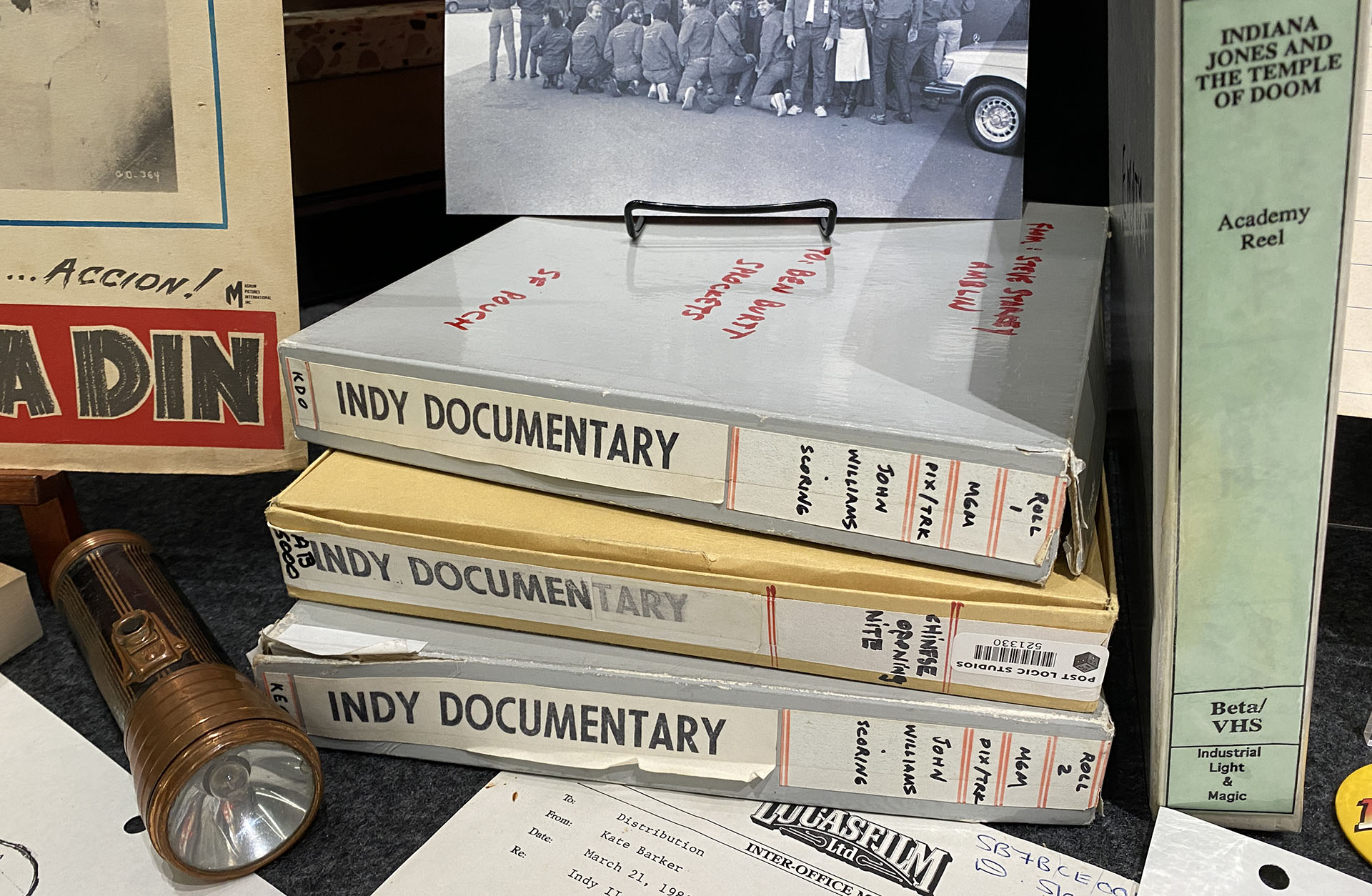
Behind-the-Scenes Coverage
These boxes marked “Indy Documentary” are on loan from Lucasfilm’s film archive. They originally stored 16mm reels captured during Temple of Doom’s production and release, in this case, John Williams and the London Symphony Orchestra recording the film’s musical score, and a premiere screening at Mann’s Chinese Theatre in Hollywood where many fans attended in costume.
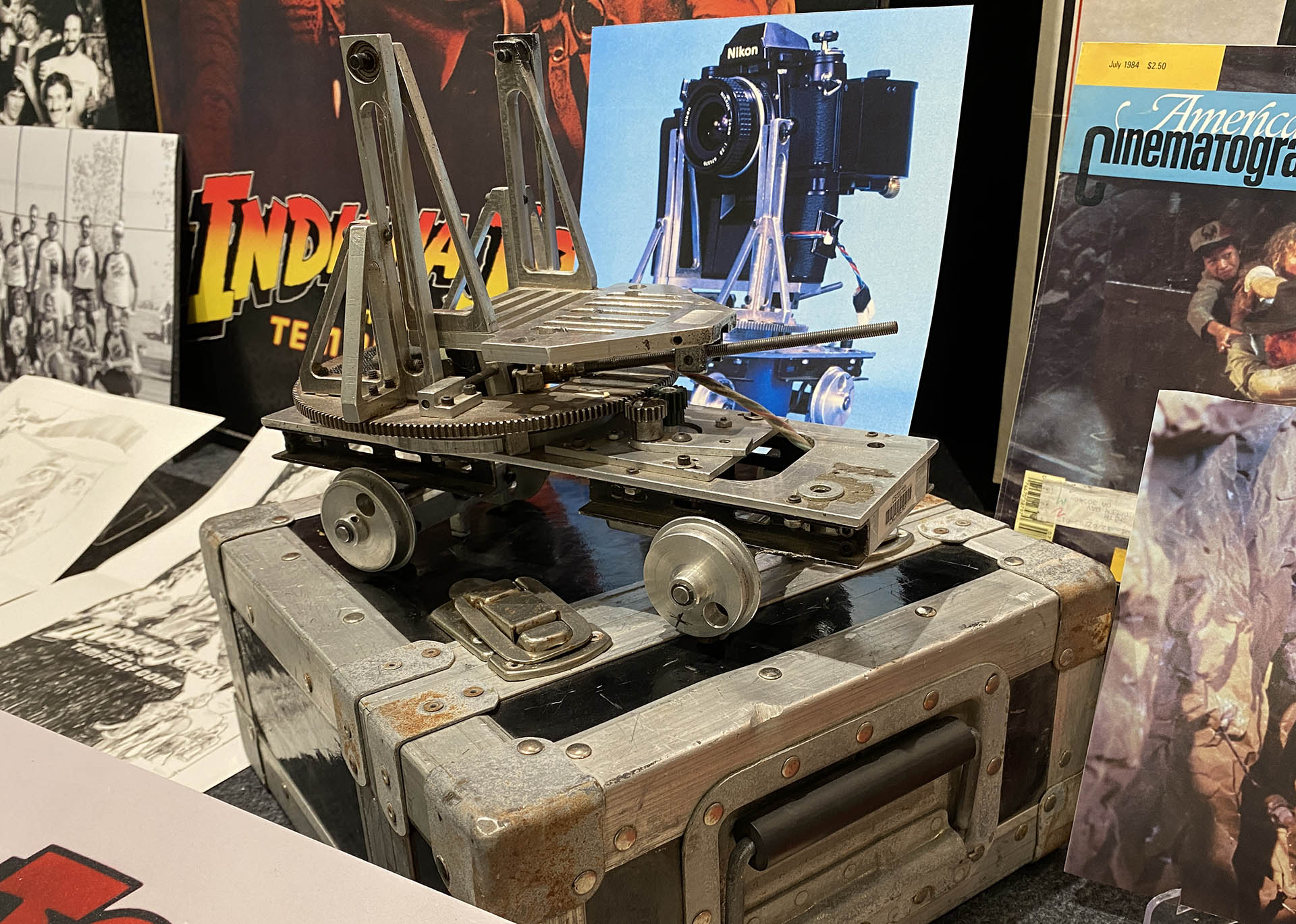
“No, Indy, It’s Left Tunnel!”
For Temple of Doom’s thrilling mine car chase, Industrial Light & Magic model builders created an elaborate series of scaled-down tunnels with tracks for miniature mine cars and stop-motion puppets to be animated one frame at a time. In order to film the chase from the point of view of Indy and the others, ILM needed to devise a way for a camera shooting motion picture film – in this case, in the sideways Vistavision format – to fit through the narrow passages. Their solution was to modify an existing Nikon single-lens reflex camera to shoot the footage one frame at a time while atop a special camera cart built just for the sequence. The Nikonflex, as it came to be called, provided one of the most innovative and memorable sequences in the film.
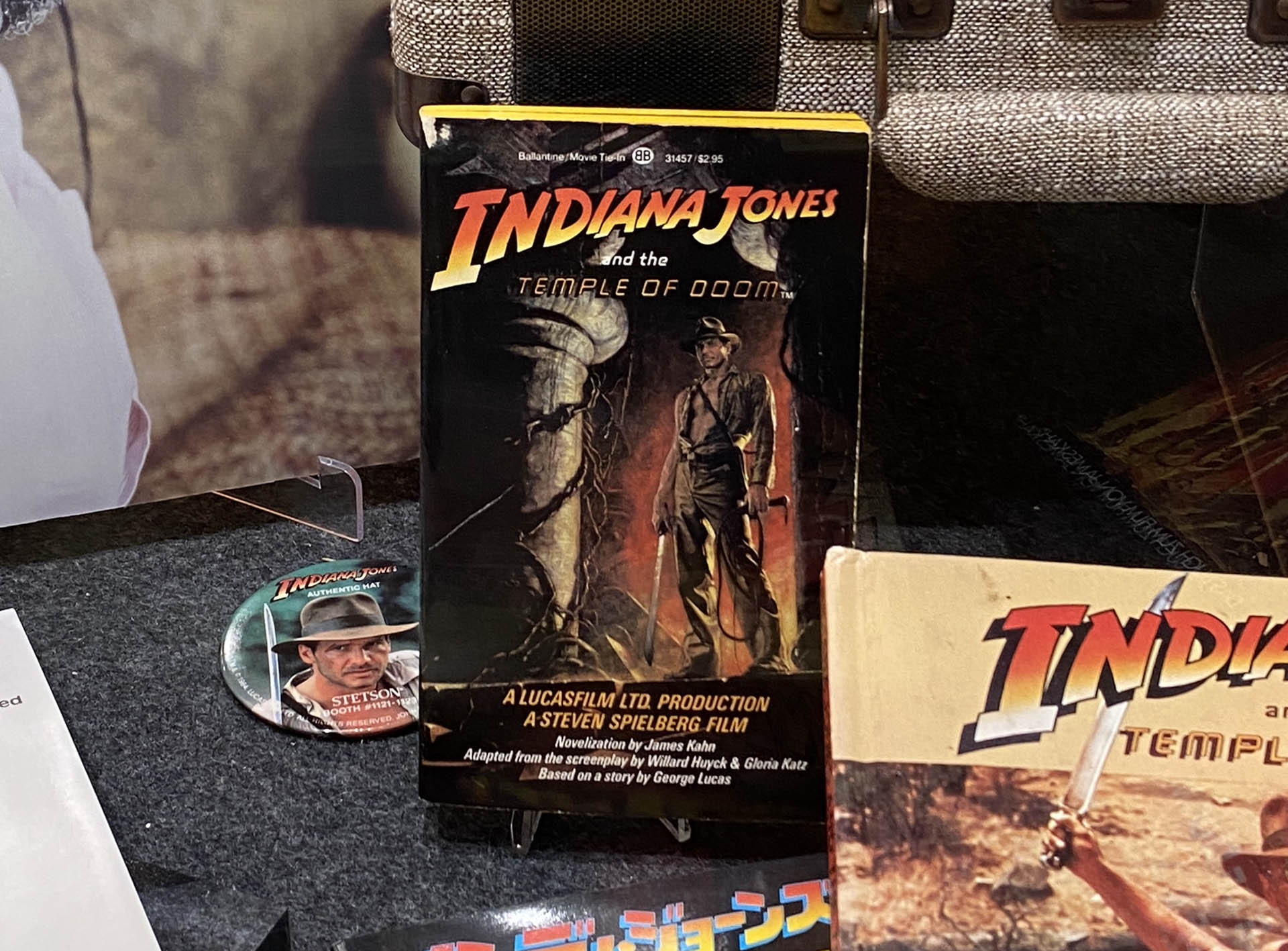
From the Screen to the Page
Writer James Kahn had been working as an emergency room doctor in Los Angeles when producer Kathleen Kennedy recruited him as a consultant for the medical operation sequences in E.T. the Extra-Terrestrial (1982). After he wrote the novelization of Poltergeist (1982), Steven Spielberg recommended him to Lucasfilm for Star Wars: Return of the Jedi’s (1983) adaptation. His subsequent novelization of Temple of Doom is distinctive for its narrative shifts in point-of-view between Indy, Willie, and Short Round, respectively. The display featured Kahn’s Temple of Doom novelization from several regions around the world.
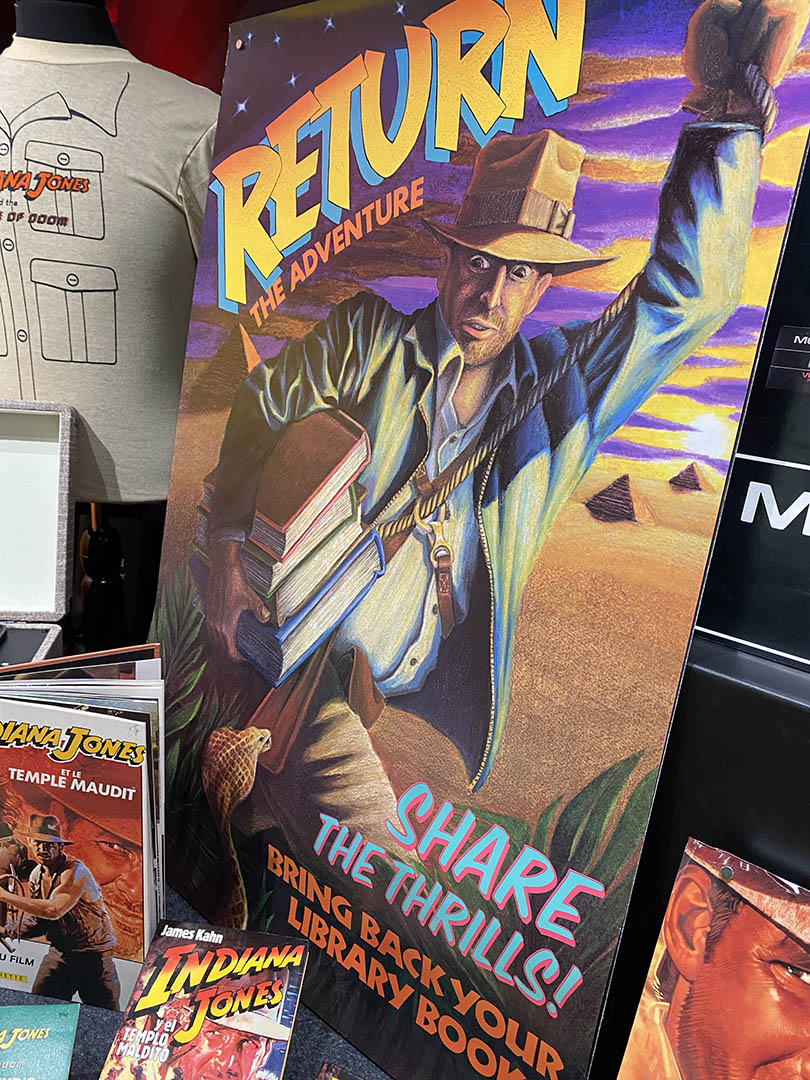
Share the Thrills (by bringing back your library books!)
Like the iconic “Yoda READ” library poster from 1983, the American Library Association tipped their hat to Indy in 1984 with a poster encouraging readers to “Return the Adventure” – an obvious play on the Raiders of the Lost Ark slogan “The Return of the Great Adventure” – and to return their library books. While not officially an Indiana Jones poster, the similarities to the archaeologist-adventurer are obvious, down to the fedora, leather jacket, and snake (which clearly gives the swinging book-toting hero a scare).
Pete Vilmur is a writer for Lucasfilm Publicity and co-author of The Star Wars Poster Book, The Star Wars Vault, and The Complete Vader.
—
Lucasfilm | Timeless stories. Innovative storytelling.

